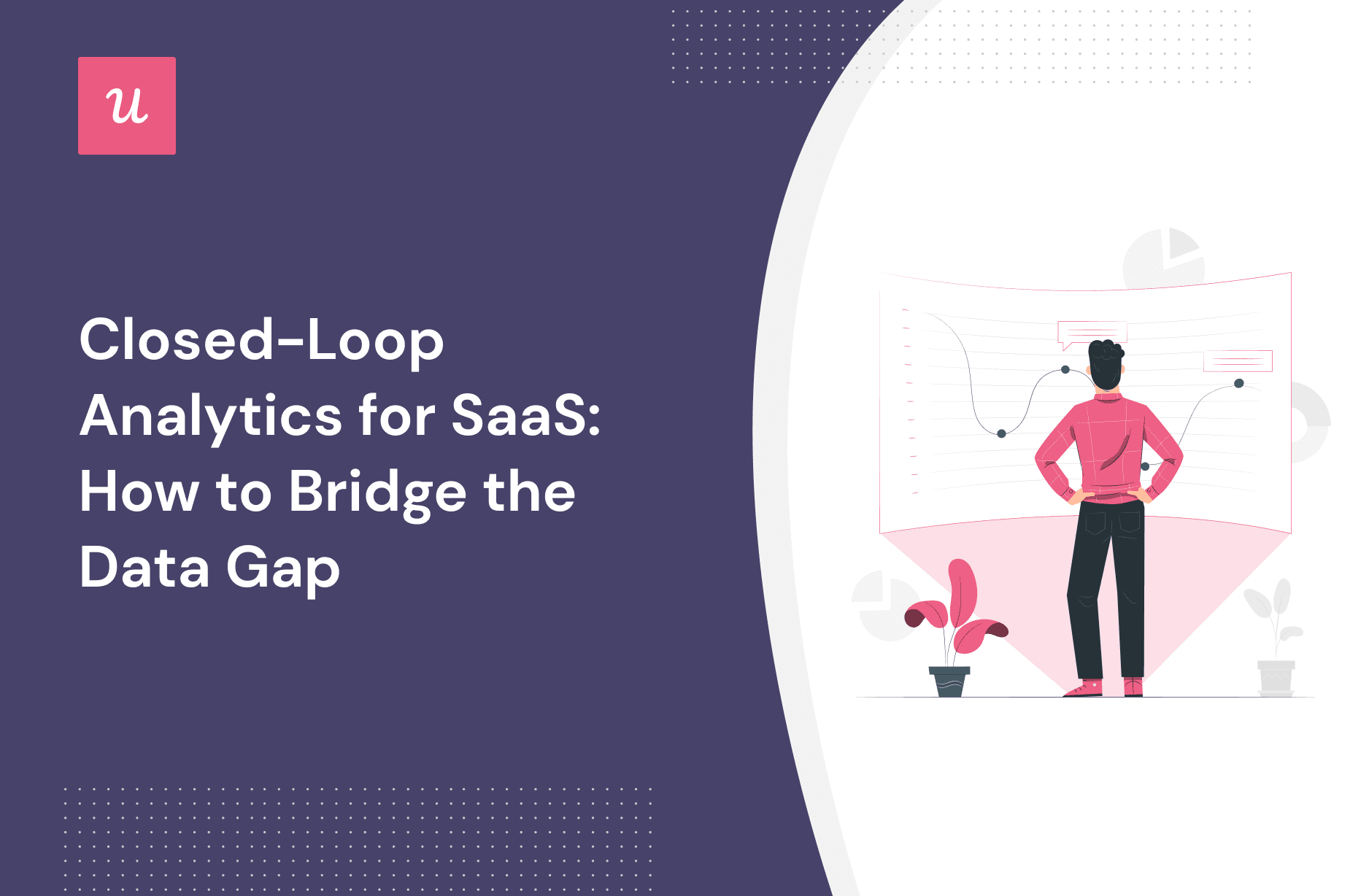
The SaaS world is filled with product growth analytics and metrics that span the entire customer lifecycle. Today, we’ll be focusing on closed-loop analytics and how they can help you better manage and benefit from data!
Try Userpilot Now
See Why 1,000+ Teams Choose Userpilot

Closed-Loop Analytics (Short Summary)
- Marketing and sales teams have different goals, which is why they often have different data sources or metrics. Marketing teams may look at Google Analytics while your sales team will likely check their CRM platform. The key is to share data between the teams anyway.
- Closed-loop marketing can lower your customer acquisition cost, improve the user experience, increase conversion rates, and shorten the sales cycle.
- Closed-loop analytics data help you align your platform’s messaging and marketing campaigns with the customers you reach out to or traffic that comes into your website.
- Every department in a SaaS company should be aligned with ongoing marketing campaigns and active sales funnels. There’s nothing wrong with each team having its own funnel, but you should still unify efforts.
- Closed-loop analytics will help you streamline your sales processes, bring in more leads/customers, and increase conversions through a closed-loop marketing strategy.
- The more data you have, the easier it will be to streamline and personalize your sales process. In turn, you’ll have a more efficient process that gets more customers in the door.
Is your data strategy closing the loop?
Aligning sales, marketing, and product data is crucial for growth. Take this 4-step assessment to see if you have achieved true closed-loop analytics.
What are closed-loop analytics?
Closed-loop analytics is the practice of sharing relevant information between different business departments to improve results. It’s named closed-loop analytics because it creates a full cycle of data transfer so that all teams can access and learn from each other’s data.
For example, closed-loop analytics can provide key insights from the sales to the marketing team, including where leads are coming from, whether or not they convert, and what drove their purchase decision. In other settings, sales and marketing teams might add other departments to the loop like customer success.
Marketing analytics vs. sales analytics
While your marketing and sales teams will likely use different SaaS analytics or KPIs, there’s nothing stopping them from sharing data to further each other’s goals. Marketing teams generally focus on building the brand, increasing product awareness, and bringing in marketing-qualified leads (MQL).
On other hand, sales teams focus on nurturing those leads throughout the sales funnel and converting them into customers. After a lead converts, the rest of the customer lifecycle will determine whether they become long-term users or even brand advocates.
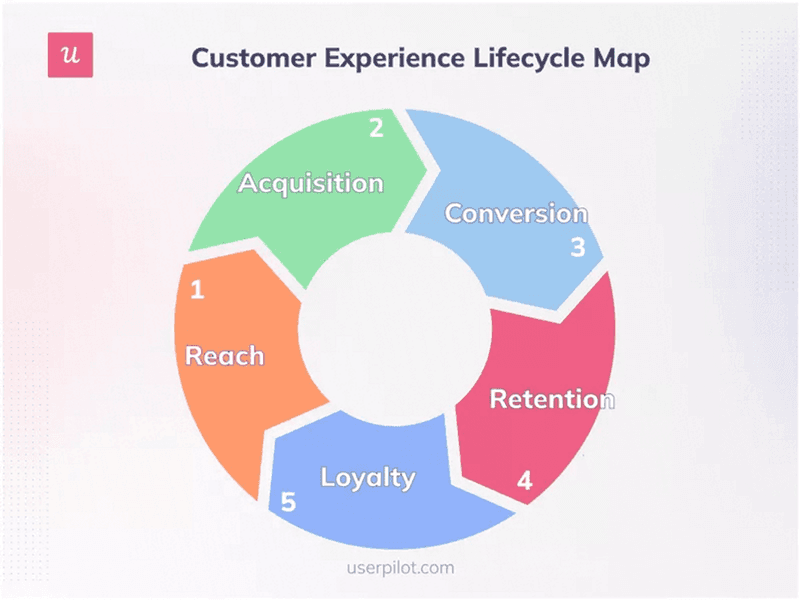
Marketing teams tend to focus on reach, impressions, visitors/pageviews, SERP rankings, and free trial signups. Conversely, sales teams focus on revenue growth, NPS scores, customer lifetime value, sales velocity, and other similar metrics.
This gap between marketing and sales data could lead to a rift between the teams that impact their line of communication. To make the information transfer between your marketing and sales team more robust, you’ll need to create a closed loop.
The 4 steps of closed-loop marketing
Closed-loop reporting tries to bridge the gap between your marketing and sales teams using the four-step process below:
- Visitor arrives on your website, and the original source is identified. Identifying the source of website visitors is essential so your marketing team can generate leads more cost-effectively by focusing on the channels that work.
- Visitor browses your website, and their actions are tracked. You can use Google Analytics to see which pages leads land on, which homepage links get the most clicks, and data collected from Google Search Console to monitor impressions.
- Visitor converts to a lead, and their data is collected. Your marketing team and sales team should both know how many leads are coming in from your marketing efforts. If most visitors don’t become leads, that’s an indicator that the sales funnel needs tweaking. Once a lead converts, their name, email, or other details are collected.
- Lead becomes a customer, and the original source is credited. Conversion tracking is about more than just conversion rates and total revenue generated. You need to log the traffic sources, marketing tactics, and campaigns that brought the leads in to get a holistic view of the sales funnel.
Closed-loop marketing is truly the answer when it comes to efficient data management, but how expensive is it?
Product-led SaaS companies that don’t want to pay extra for dedicated audience-tracking software can use Userpilot’s customer analytics to track in-app behavior from signup to conversion. This will help you measure loyalty, spot trends, and drive product-led growth.
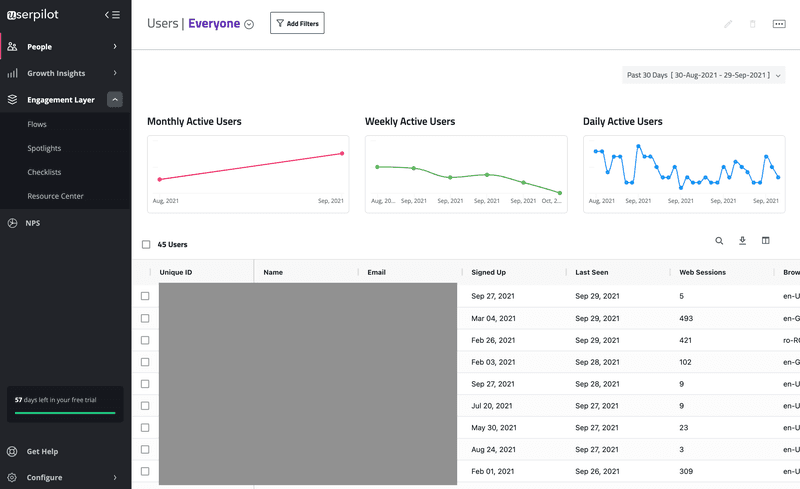
The vital benefits of closed-loop analytics
Closed-loop analytics provides crucial information on prospects, leads, and customers. These insights can be used to then optimize the customer experience, reduce the cost of your marketing campaigns, and boost your return on investment.
Having a complete picture of the data also makes it easier to measure the true effectiveness of your marketing campaigns and identify the user acquisition channels that are worth doubling down on.
There are also many examples of how closed-loop analytics can benefit multiple divisions simultaneously. For instance, the support team could tell your digital marketers who the ideal user persona is and which pain points come up most often in tickets.
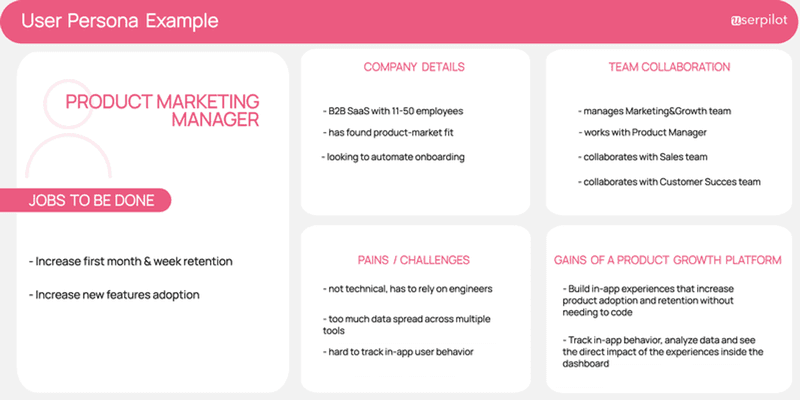
This gives your digital marketers the information they need to gear their messaging toward that persona and bring in more marketing-qualified leads. With how long and complex the SaaS customer journey is, every bit of sales data or support tidbits can be invaluable.
After all, a big part of product-led acquisition comes down to aligning your product with the target audience. The more information your marketing team has, the easier it will be to do just that.
If you’re ready to start reaping the benefits of closed-loop analytics, then the section below will walk you through the steps of implementing it!
How to implement closed-loop analytics
If you want to implement an actionable closed-loop marketing strategy, then there are five things you need to do.
1. Align activities across funnel stages
Different departments will have their own funnels, but you should still create a unified funnel that outlines the key stages of the user’s customer journey. This will ensure that there are no gaps when transitioning from stage to stage and make comparing data between teams easier.
If you’re not quite sure which funnel KPIs are worth tracking and sharing, serial Silicon Valley Entrepreneur Dave McClure’s pirate metrics might help you identify the data points you should be watching:
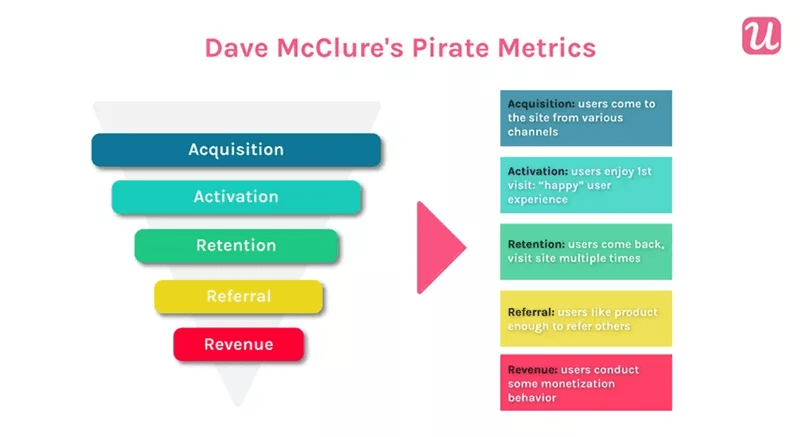
2. Encourage a data-driven mindset
Relevant data is the lifeblood of any closed-loop marketing strategy. Teach your team to collect, analyze, and share data to get the most value out of the insights available at each department.
Don’t fall into the trap of cherry-picking data that justifies biases, confirms your biases, or paints a more positive picture of growth. Analyzing data holistically and objectively is crucial to any closed-loop marketing campaign.
For instance, having a known source of customer acquisition and revenue growth will make it easier to ensure your marketing efforts result in actual revenue instead of just sunk costs. Running Google ads or producing content without data is quite literally a shot in the dark.
3. Foster active collaboration
The closer that your support, success, marketing, and sales team collaborate, the easier it will be to align their efforts and exchange findings. Having regular meetings, internal training, seminars, and other collaborative activities will be key to getting everyone on the same page.
Using tools like Notion or Slab to create an internal knowledge base can also make it easier to store and share customer insights and analytics that need to be communicated to different departments within organizations.
In general, companies that have one team lead per department focused on sharing analytics will have an easier time tracking data in a closed-loop environment. Of course, the practicality will vary depending on the size and scope of specific companies.
4. Get the right tools
Having the right tool stack will make implementing a closed-loop analytics strategy a whole lot easier. Google Ads, Google Analytics, and Google Search Console are examples of free analytics tools that can yield valuable insights.
On the other hand, you shouldn’t be afraid to pay for software that can automate data collection, analysis, and sharing. These will save you time and money in the long run while reducing the risk of human error.
Each department might have its own specialized software (e.g., Google Analytics or Databox for the marketing team, HubSpot for the sales team, and Intercom for the support team) but the data should always be shareable.
You can also use a tool like Userpilot that specializes in helping product-led companies monitor their audience analytics, track progress towards specific goals, and create in-app flows that make visitors convert.
With Userpilot’s native mobile SDK, it extends these capabilities by enabling you to create intuitive mobile app KPI metrics and dashboards for clear insights into mobile user behavior, engagement, and retention. Essentially, the software helps optimize the entire customer journey from onboarding to in-app marketing.
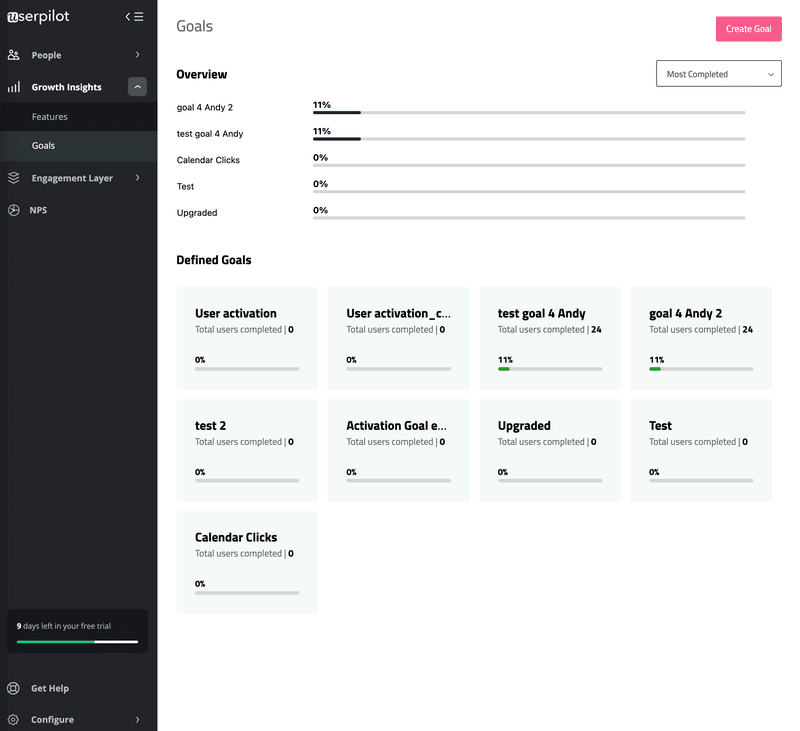
5. Streamline sales processes
Whether you’re running a product-led business or relying on outbound sales, your processes need to be as streamlined as possible to maximize and track conversions. The sales model and stages will also determine how many visitors convert versus how many remain leads.
Which sales model is the right fit will depend on the type of product you have, who your customer base is, and where your website traffic is actually coming from. Dig deep into your user persona to get a clear idea of the needs a lead might have when using your platform.
Once you have the necessary data, personas, and clarity to personalize your sales processes to each important segment, it will become a lot easier to approach a lead and convert them — leading to more conversions and new customers being acquired.
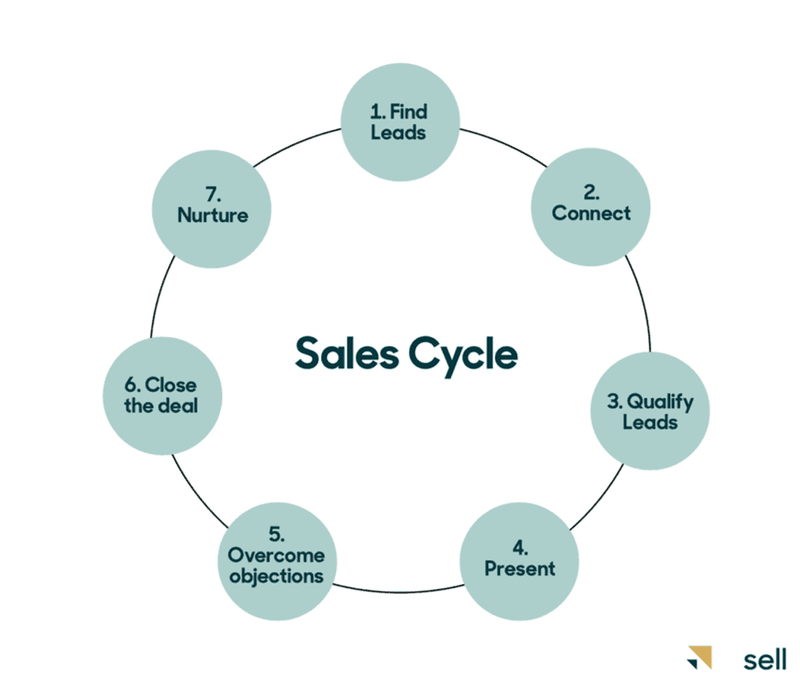
To conclude
As you can see, closed-loop analytics can be a game-changer for your marketing efforts and revenue growth — not to mention the customer experience! It’s truly time to start tracking additional information that you haven’t been paying attention to before.
If you’re ready to adopt the closed-loop marketing approach for your company, you can start by getting your free Userpilot demo today!







